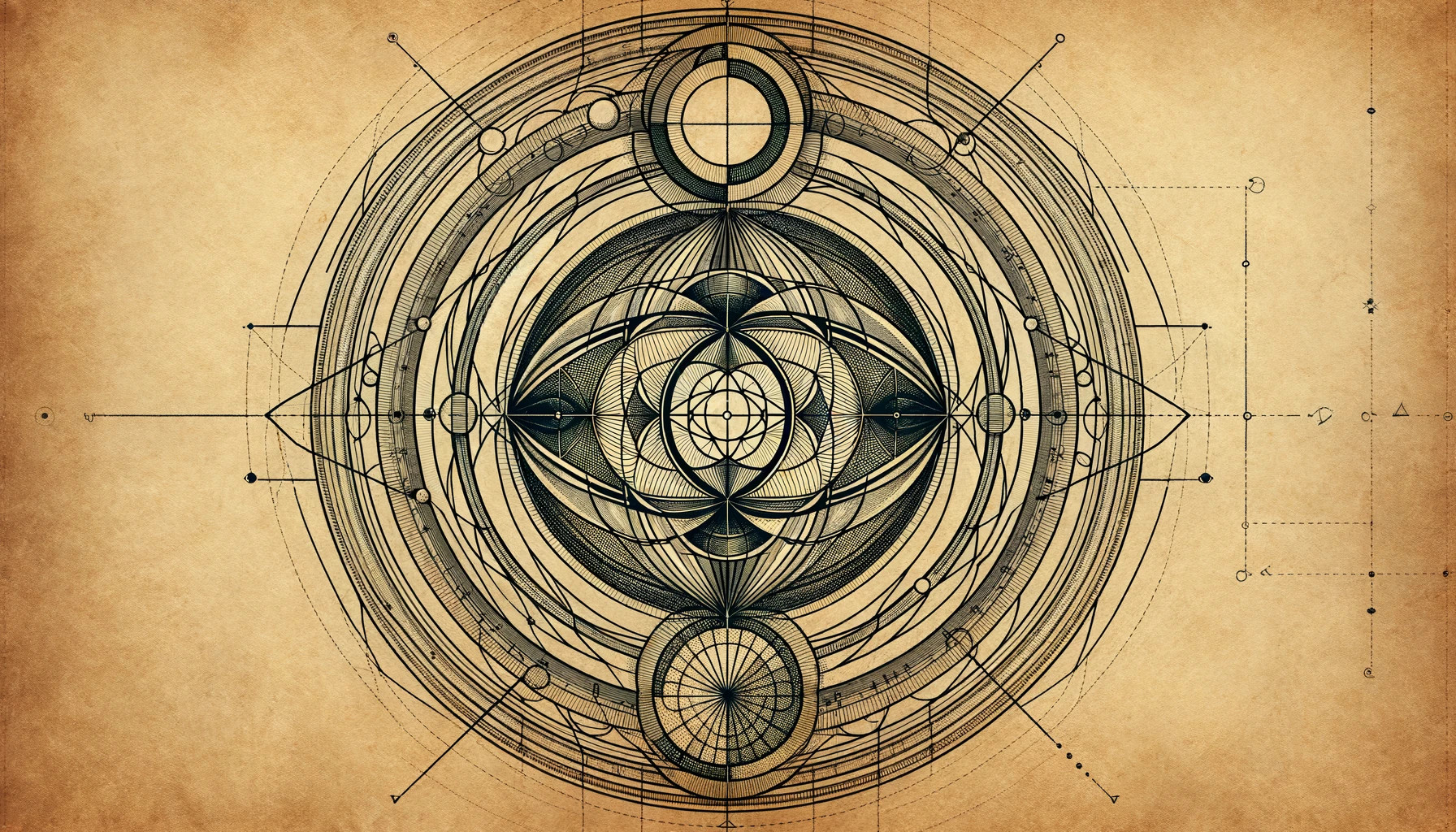“I shall define beauty to be a harmony of all the parts, in whatsoever subject it appears, fitted together with such proportion and connection, that nothing could be added diminished or altered, but for the worst.”
In the realm of sacred geometry, beauty is not merely an aesthetic concept but a profound expression of the underlying order and design of the universe. This perspective sees beauty as a manifestation of mathematical and visual perfection, echoing the principles outlined by figures like Leon Battista Alberti. This article describes how sacred geometry frames the purpose of beauty, revealing a cosmos intricately woven with mathematical precision and aesthetic harmony.
The Foundation of Sacred Geometry
Sacred geometry is the study of geometric shapes and proportions that are believed to embody a deeper, metaphysical significance. It is rooted in the idea that certain geometric patterns and ratios recur with a remarkable consistency in nature, art, and architecture. This repetition is seen not as a mere coincidence but as evidence of an objective, universal design.
Leon Battista Alberti’s Perspective
Renaissance polymath Leon Battista Alberti profoundly influenced this field with his views on beauty and proportion. He believed in an inherent harmony and balance in creation, famously stating that beauty results from “that reasoned harmony of all the parts within a body, so that nothing may be added, taken away, or altered, but for the worse.” Alberti’s conception of beauty aligns closely with sacred geometry’s emphasis on precise proportions and the interrelation of parts to the whole.
The Purpose of Beauty in Sacred Geometry
In sacred geometry, the purpose of beauty transcends mere visual or sensory pleasure. It is a reflection of the cosmic order and an expression of universal truths. Beauty, in this context, is not subjective, but an objective reality based on mathematical precision and geometrical principles.
Reflection of Cosmic Order
The patterns and shapes revered in sacred geometry are seen as microcosms of the larger structure of the universe. The beauty in these patterns reflects the order and harmony of the cosmos itself. By contemplating and understanding these geometric forms, one can, in theory, gain insights into the nature of reality and the universe.
Symbolism and Meaning
Sacred geometry imbues beauty with symbolic meaning. Geometric shapes such as the circle, square, and spiral are not just visually pleasing, but also carry profound philosophical and spiritual significance. For example, the circle often represents unity and infinity, while the spiral can symbolize growth and evolution.
A Path to Transcendence
For practitioners and admirers of sacred geometry, the beauty in these patterns and shapes is a conduit to a higher spiritual plane. It provides a meditative focus that can lead to greater awareness and understanding, transcending the physical and reaching into the realm of the metaphysical.
Universal Language
Sacred geometry is often described as a universal language, a means of communication that transcends cultural and temporal boundaries. The beauty inherent in these geometric patterns speaks to an intuitive understanding of order and harmony that is accessible to all, regardless of background or education.
Conclusion
From the perspective of sacred geometry, the purpose of beauty is deeply entwined with the fabric of the universe itself. It is not just an attribute but a fundamental aspect of the cosmic order, encoded in the language of mathematics and geometry. As Leon Battista Alberti and many others have observed, this beauty is a harmonious interplay of parts and proportions, echoing the intricate and interconnected nature of existence itself. In exploring and appreciating this beauty, one may find not only aesthetic pleasure but also a profound connection to the larger universe and its underlying truths.
